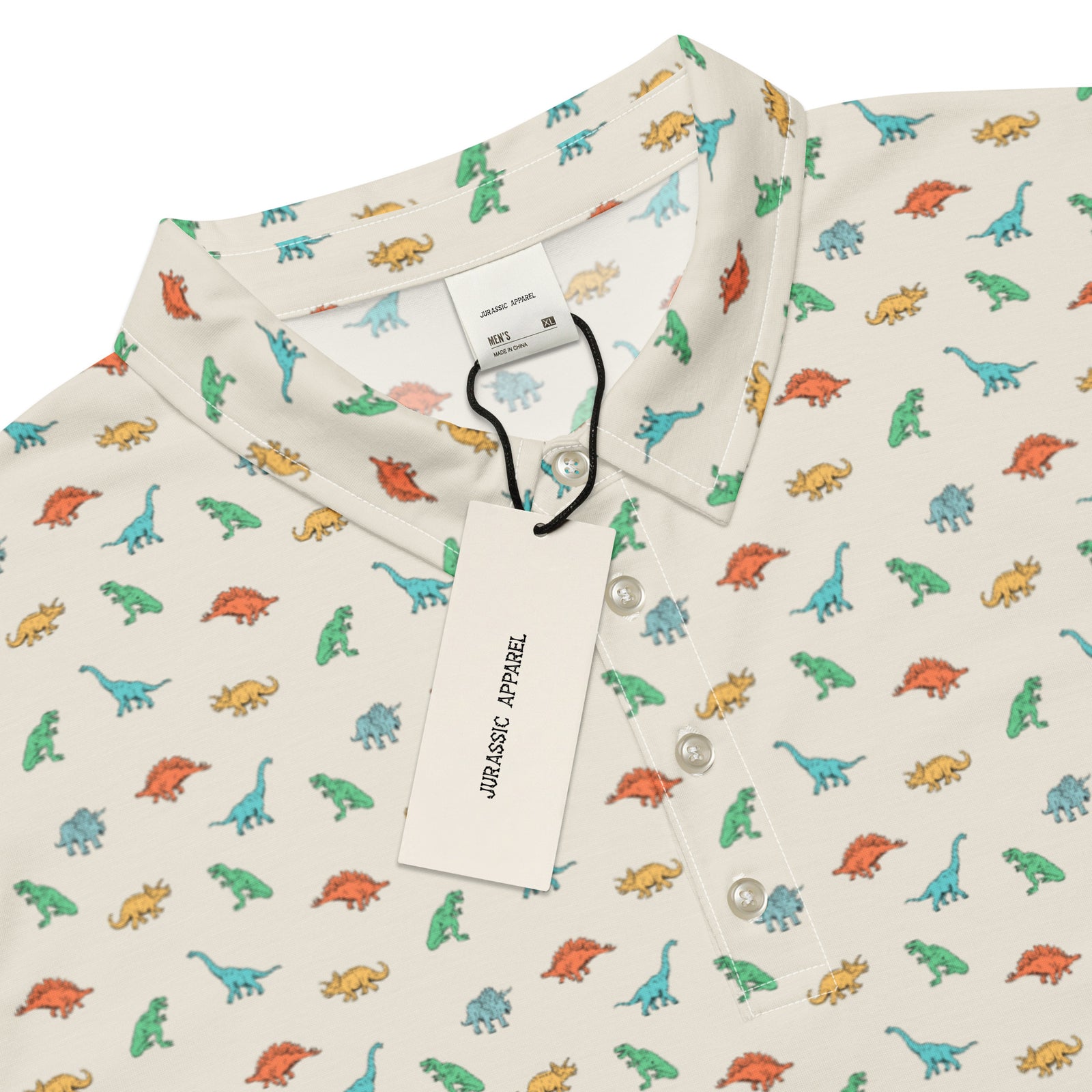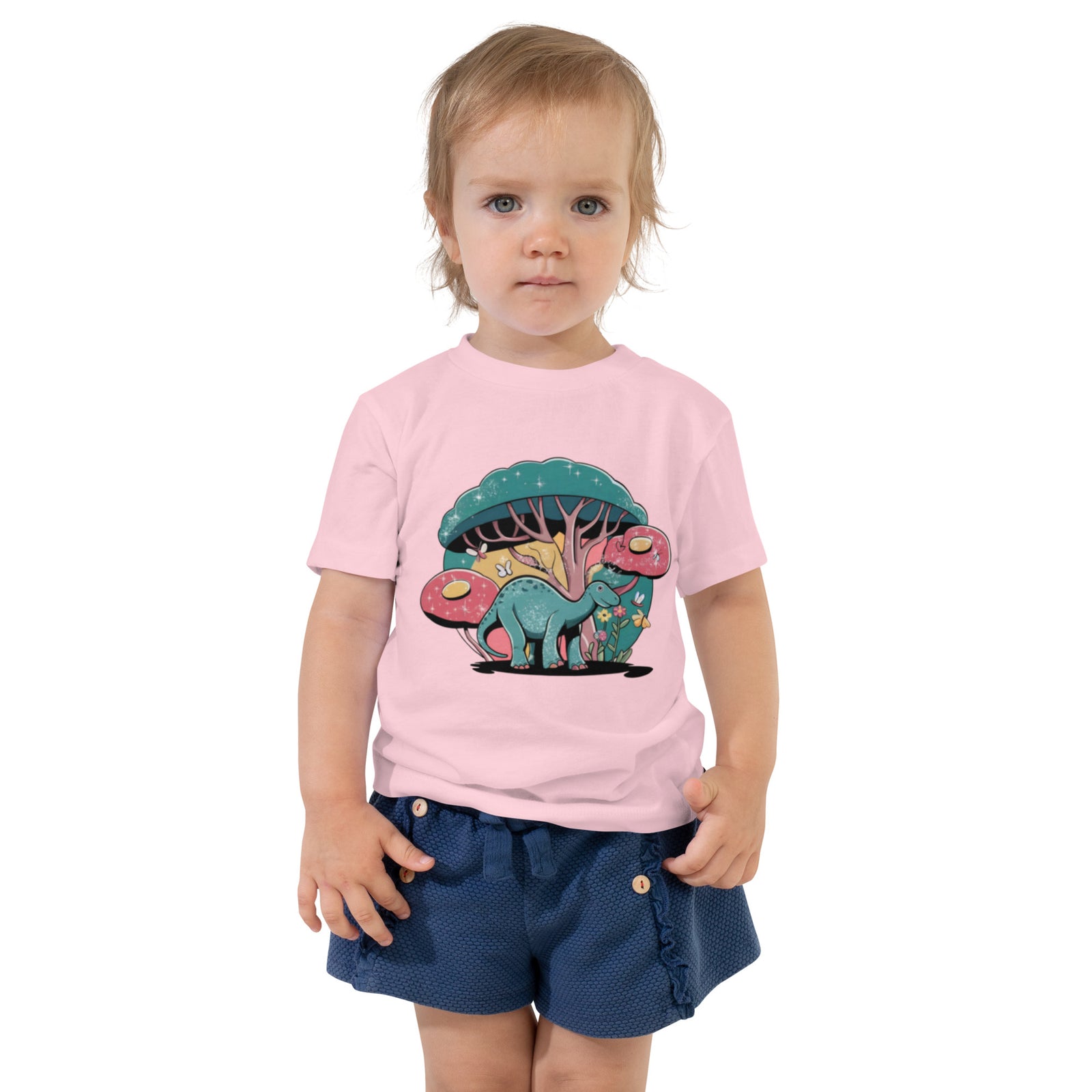Free Shipping On Orders over $75
Free Shipping On Orders over $75
Women's
Men's
Kids
Baby/Toddler
Accessories
Eoraptor
July 31, 2024 3 min read

(AI Interpretation)
Eoraptor: The Dawn of Dinosaurs
Dinosaur Facts:
- Dinosaur Type: Saurischian
- Period: Late Triassic (approximately 231 million years ago)
- Diet: Omnivorous
- Length: About 3.3 feet (approximately 1 meter)
- Height: Approximately 1.5 feet (around 0.5 meters) at the hips
- Weight: Roughly 10-15 pounds (4.5-7 kg)
- Notable Features: Bipedal stance, sharp teeth, and long arms with three fingers.
Eoraptor for Kids
Meet Eoraptor!
Eoraptor, which means "dawn thief," is considered one of the earliest known dinosaurs. It roamed the Earth about 231 million years ago, during the Late Triassic period. This small, agile dinosaur is a significant piece in the puzzle of dinosaur evolution.
What did Eoraptor look like?
Eoraptor was a small dinosaur, measuring around 3.3 feet long. Its body was lightweight, allowing it to be quick and nimble. Eoraptor had a long tail that helped it maintain balance, slender limbs, and a small head filled with sharp teeth, perfect for a varied diet.
What did Eoraptor eat?
As an omnivore, Eoraptor had a diverse diet. It likely ate small animals, insects, and plants. Its teeth suggest that it had the capability to consume both meat and vegetation, showcasing its adaptability in a changing environment.
In-Depth Look at the Eoraptor
Anatomy and Physical Features
Eoraptor had distinct features that marked it as a basal dinosaur. Its long neck allowed for quick movements while foraging. The three-fingered hands were less evolved than later predatory dinosaurs, hinting at its role in the ecosystem as a nimble forager rather than a top predator.
Behavior and Habitat
Eoraptor inhabited floodplains and grasslands that supported a mix of flora and fauna. Its bipedal gait allowed for efficient movement across these diverse landscapes. It likely inhabited areas near water, where it could hunt for food.
Scientific Discovery and Research
Eoraptor was first discovered in 1991 in Argentina by paleontologists led by Paul Sereno. Its classification as a basal dinosaur provides insight into the evolution of later, larger dinosaurs. Ongoing studies of the fossils continue to shed light on its biology and lifestyle ([source](https://www.amnh.org/research/paleontology)).
Social Behavior and Hunting Techniques
It is believed that Eoraptor may not have been a solitary creature. The discovery of multiple fossil specimens in close proximity suggests some level of social organization. Its hunting techniques likely involved agility, allowing it to dodge threats and hunt smaller prey effectively.
Eoraptor in Popular Culture
While it may not be as famous as the Tyrannosaurus rex, Eoraptor has made appearances in various documentaries and children's books, represented as a cute yet fierce little dinosaur of the Triassic period. These portrayals help introduce younger audiences to the diversity of dinosaur life ([source](https://www.history.com/topics/pre-history/dinosaurs)).
Ongoing Research and Discoveries
Researchers continue to discover fossils that provide insights into Eoraptor and its relatives. New technologies, such as CT scanning, are being used to analyze existing fossils, revealing new information about the anatomy and ecology of these early dinosaurs ([source](https://www.science.org/doi/10.1126/science.aaa8990)).
Conclusion
Eoraptor represents a crucial part of the evolutionary tree of dinosaurs, showcasing the transition from smaller, nimble species to the massive creatures that dominated later periods. Its unique blend of traits offers fascinating insights into what early dinosaurs were like. Understanding dinosaurs like Eoraptor helps us appreciate the complex history of life on Earth and its ancient inhabitants.





